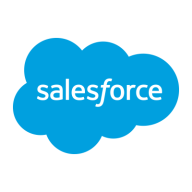

Find out in this report how the two Cloud Data Integration solutions compare in terms of features, pricing, service and support, easy of deployment, and ROI.
The support team is responsive and helpful.
The Salesforce team offers different levels of support.
TIBCO's support, especially for integration products, is swift.
MuleSoft Anypoint Platform is quite scalable, and it meets our use cases with no issues preventing implementation.
MuleSoft provides the ability to scale, yet it is costly to do so.
There are no significant stability issues as long as the product's capabilities are understood and not overly pushed.
MuleSoft is considered expensive, so pricing is a major concern.
Currently, it uses other standards, but adopting OpenAPI, the standard in the market, would be beneficial.
When dealing with multiple transactions or trading, the system can lose control, and tracking becomes hectic.
TIBCO Spotfire and ClickView need improvement in scheduling, which is critical yet lacking in quality.
I do not know the specific costs, but given that it is part of MuleSoft, I suspect it is not cheap.
MuleSoft is considered one of the more expensive products in the market.
The platform reduces manual workload in maintaining infrastructure, but it does come with some cost considerations.
TIBCO Spotfire's pricing is high, particularly in traditional markets like Turkey, impacting market penetration.
The platform is integrated with Salesforce, making it preferable when using Salesforce products.
MuleSoft Anypoint Platform helps to standardize data integration approaches, making it easier to implement integration projects.
The most valuable feature is the full lifecycle management, including Anypoint Designer and Exchange, as well as Discofolio API.
TIBCO Spotfire integrates with R and Python, offering a differentiator from the competition.


MuleSoft Anypoint Platform is used for integration and API management, connecting enterprise applications across retail, e-commerce, and supply chain. It supports cloud-to-cloud and cloud-to-on-premises scenarios with real-time and asynchronous messaging.
Users leverage MuleSoft Anypoint Platform for diverse integrations including cloud-based and on-premises, enabling data transformations, middleware functions, and hybrid integrations. It seamlessly connects systems like SAP, Salesforce, and Oracle, facilitating data transfers and integrating legacy systems. The platform offers a graphic interface, quick implementation, and a variety of connectors, contributing to its popularity for robust and scalable solutions. Despite its strengths, users seek better technical support, more connectors, simplified runtime management, and improved documentation.
What are the key features of MuleSoft Anypoint Platform?Enterprises in retail, e-commerce, and supply chain implement MuleSoft Anypoint Platform to connect various applications and systems. It supports real-time messaging for inventory management, synchronizes customer data across platforms, and integrates with legacy systems for smooth data migration. Users benefit from quick deployments and a marketplace that accelerates integration projects.
TIBCO Spotfire is a versatile data analytics platform that can handle large datasets and be deployed on-premise or in the cloud. Its dynamic reporting, easy creation of dynamic dashboards, and highly customizable tool make it a valuable asset for process data analysis, industrial performance dashboards, problem root cause analysis, business intelligence, and real-time analytics for IoT devices in the energy sector.
The solution also offers data science functions, map visuals, R and Python integration, and the ability to write HTML and JavaScript text areas. Spotfire has helped organizations deliver projects more efficiently and cost-effectively, allowing for faster data analysis.
We monitor all Cloud Data Integration reviews to prevent fraudulent reviews and keep review quality high. We do not post reviews by company employees or direct competitors. We validate each review for authenticity via cross-reference with LinkedIn, and personal follow-up with the reviewer when necessary.